Grants
The DIPG / DMG Collaborative has funded $19,322,550 in DIPG/DMG research.
Interested in applying for a grant from the DIPG / DMG Collaborative? Learn more.

SONALASENSE – $198,436
$198,436.00
November 2022
A Phase 1/2 Study of Sonodynamic Therapy Using SONALA-001 and Exablate 4000 Type 2 in Patients With DIPG
Diffuse intrinsic pontine glioma (DIPG) is a lethal pediatric brain tumor with no effective therapy and extremely poor prognosis (average 9 months of survival after diagnosis). Because of the location of DIPG tumors within the brainstem, surgical intervention is a highly invasive and imprecise option, as accidental removal of any excess tissue in the area can cause additional brain damage. Thus, there is significant need for a method to effectively treat DIPG that is non-invasive. Preclinical studies have shown that performing non-invasive sonodynamic therapy (SDT) through MRI-Guided Focused Ultrasound (MRgFUS) combined with 5-aminolevulinic acid (ALA) can slow growth of gliomas and greatly extend survival in animal models of glioma. ALA is a metabolite, or a molecule used in metabolic processes. Because cancer cells have metabolic rates significantly higher than healthy cells, ALA is selectively taken up by cancer cells at a rate much higher than normal cells. Within tumor cells, ALA is then converted into a molecule, Protoporphyrin IX (PpIX), which causes cell death when activated by blue light – this process is called Photodynamic Therapy. SonALAsense’s SDT uses the energy of ultrasound to produce light within the brain to activate PpIX, selectively killing tumor cells.
We have shown that ALA combined with SDT (or ALA SDT) can safely and effectively kill tumor cells in a first-in-man a Phase 0/1 clinical trial at the Ivy Brain Tumor Center in recurrent high-grade glioma patients (NCT04559685) and decrease DIPG cell viability in cell cultures through a study with Dr. Javad Nazarian the DMG Research Center at University Children’s Hospital, Zurich, Switzerland. With this promising data, SonALAsense will test the combination therapy of MRgFUS and ALA in a three center, Phase 1/2 clinical trial that will establish dosing and safety for future clinical trials to improve the outcomes and survival in DIPG patients.

UPMC Childrens Hospital of Pittsburgh – $100,000
$100,000.00
November 2022
The Role of QPRT and NAD Pathways in DIPG Treatment Resistance (Continued)
The proposed studies build upon preliminary findings from Year 1 of our funding to provide new insights into the role of mediators of NAD+ biosynthesis and energy metabolism in the treatment-resistance of pediatric diffuse midline gliomas (DMGs), including diffuse intrinsic pontine gliomas (DIPGs) and other childhood high-grade gliomas (HGG), the most commonly fatal brain tumors of childhood, incorporating our unique resource of treatment-naïve and treatment-resistant glioma models. Our observations from Year 1 have begun to define the underlying causes of pre-existing and acquired resistance, which has to date been an intractable problem for children with these tumors. Our preliminary data, approach and the rigor of our previous studies support a hypothesis that treatment-resistant cells exhibit exquisite dependence on mediators of NAD+ synthesis and the resulting effects of NAD+ on energy metabolism. We have demonstrated that these bioenergetic pathways drive enzymes that are critical for glucose metabolism, which provide tumor cells with a survival advantage, and are amenable to therapy directed at specific molecular targets. This project seeks to define actionable targets for treatment intervention that can be exploited to improve the chances for cure in children with malignant glioma and may have applicability to other tumor types.
Background:
HGGs, including DIPGs, are the most commonly fatal brain tumors in children. Accordingly, new treatment strategies are required that build on an understanding of the inevitable development of drug resistance among diverse tumor populations. Using an initial pharmacological (drug-based) screening approach, we reported on several two-drug combinations that were particularly active against a wide range of HGG/DIPG cell lines. The most broadly effective regimen was the combination of two classes of drugs: 1) a histone deacetylase inhibitor (HDACi), such as panobinostat, that influences which genes are “turned on” and 2) a proteasome inhibitor (Pi), such as marizomib, which influences processing of cell proteins. This combination killed HGG/DIPG cells far more effectively than either drug alone, although at maximum concentrations tolerated in patients, a small population of cells consistently survived treatment. These surviving cells prompted us to develop a series of drug resistance models as tools to unravel the mechanisms of treatment resistance. Using these models, resistance mechanisms were examined with 1) RNA sequencing, to determine which genes were overexpressed with resistance, and 2) pharmacologic screening of drug-resistant versus untreated cells. QPRT, a rate-limiting enzyme for NAD+ production, exhibited particularly high levels of gene and protein expression in resistant compared to untreated HGG cells, and DIPG cells showed high levels of QPRT and NMNAT2, another critical NAD synthesis enzyme, supporting the relevance of this pathway to resistance. Reducing QPRT expression counteracted resistance.
Based on these data we hypothesized that agents interfering with NAD synthesis, or its effects may exploit vulnerabilities in DIPGs and panobinostat–bortezomib- and panobinostat-marizomib-resistant (PBR/PMR) HGGs/DIPGs, which may be amenable to drug or metabolic targeting. By combining analyses of multiple PBR/PMR cells, we noted that resistant cells had overlapping dependencies on the effects of NAD in driving glucose metabolism. This suggested that metabolic vulnerabilities of resistant cells could be exploited to derive novel treatment approaches. We validated the effectiveness of one glucose synthesis inhibitor, lonidamine, on killing glioma cells in tissue culture, and demonstrated striking effectiveness in a DIPG animal model system, with >3-fold prolongation of survival.
The proposed studies build upon these findings, employing a multidisciplinary team to unravel what may be a fundamental mechanism for DIPG treatment resistance. Aim 1 will focus on further defining strategies for targeting NAD downstream pathways to reverse treatment resistance. In our prior year’s work, we showed that NAD activation in PBR/PMR cells enhanced glycolysis and oxidative phosphorylation. We will build on these findings, hypothesizing that this strategy can provide a general target for therapeutic vulnerability in these tumors. We will validate our hypothesis by assessing the impact of knocking down ENO2 and PFKB4, two glucose synthesis enzymes overexpressed in our preliminary RNAseq screen, using genetic and pharmacological approaches to identify candidates for clinical translation. Aim 2 will examine the effectiveness of blocking NAD-mediated treatment-resistance through ketogenic diets, based on the hypothesis that counteracting NAD+ signaling via metabolic control will have effectiveness in glycolysis-dependent DIPGs and other pediatric HGG animal models. We will determine whether NAD+-focused dietary modulation promotes survival, and if blood/CSF NAD+ and energy metabolites comprise therapy-response biomarkers. We will examine the effect of ketogenic versus normal diets independently and in the setting of therapy resistance. This work will provide a real-world correlate of metabolic therapy immediately adaptable to children with an almost uniformly fatal tumor.
These studies will provide new insights into mechanisms of treatment resistance and the role of NAD+ pathway activation and its effects on glucose usage as a novel therapeutic target. These observations may lead to the development of new treatment approaches for not only DIPGs, but also other malignant tumors of childhood.

The Hospital For Sick Children (SickKids) – $100,000
$100,000.00
November 2022
Synthetic lethality screening with methionine restriction for treatment of DIPG
DIPG is incurable cancer that is the number one cause of cancer-related deaths in children. DIPG is hard to treat because of the surgically inaccessible location, blood-brain barrier which limits some therapies and toxicity considerations related to the young age of DIPG patients. We have focused our efforts on finding therapies that target the tumor cells specifically, show low toxicity and are most easily translated for use in the clinic. We found that DIPG patient cells are extremely sensitive to the withdrawal of methionine, which is an essential amino acid that can only be obtained through diet. This means we can restrict tumor cell access by limiting it in the diet – for patients, this can be achieved by a vegan or vegan-like diet. When we limit methionine to DIPG cells, they, but not normal cells, have worse survival. Excitingly, mice with DIPG tumors in their brainstems live longer when we restrict methionine in their diets. Here, we will extend survival further by looking for drugs we can combine with methionine restriction to make its effects even better. To do this, we will use a high throughput methodology to screen thousands of compounds, identify the best combinations and test these in cell culture and in animal models. The most promising combination will be used to move to a clinical trial for DIPG.
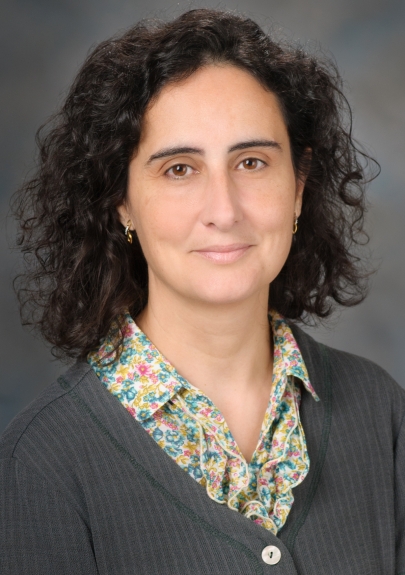
University of Texas MD Anderson Cancer Center – $100,000
$100,000.00
November 2022
Viroimmunotherapy for pediatric brain tumors
Severe acute respiratory syndrome coronavirus 2 (SARS-CoV-2) is responsible for coronavirus disease 2019 (COVID-19) and has had deleterious impacts on cancer patients including a higher risk for severe illness and related mortality. Despite the undeniable and global negative effects in most cancer patients, some clinical anecdotes revealed the paradoxically beneficial role of COVID-19 on some patients with liquid tumors. During the pandemic, scientists reported cases of SARS-CoV-2 resulting in cancer remission. These recent cases together with many historical anecdotes highlight the potential of viruses as valuable anti-cancer therapeutic agents. Oncolytic viruses are biological agents that can exclusively eliminate cancer cells without harming normal cells. Selective virus replication within a tumor has the double effect of multiplying the initial viral dose and generating an immune-active microenvironment that in turn may result in a robust and persistent anti-tumor immune response. For the past 25 years, our laboratory has characterized the anti-glioma effect of a series of anti-tumor viruses produced under the general name of Delta-24. The second generation of these biological agents, termed Delta-24-RGD has been tested in several phase I and phase II clinical trials in both adults and children with malignant gliomas and DIPG. Reports from these trials showed that the cancer-selective virus infects and directly kills cancer cells and awakens the immune system of the patient. The engagement of this immune response is key to eradicating the tumor and preventing the recurrence of the disease. To enhance this immune effect, we developed Delta-24-RGDOX, a new generation of Delta-24-RGD virus, that is capable to activate immune cells within a treated tumor, generating an in-situ cancer-vaccine effect. We have observed that the infection of the tumor also elicits the resurface of immunosuppressive pathways partially shielding the tumor from the immune system of the patient. One of the main players responsible for the reemergence of tumor defenses is the protein indoleamine-pyrrole 2,3-dioxygenase (IDO). IDO is a marker of poor prognosis in gliomas and is activated after the adenovirus infection. For these reasons, we hypothesize that the combination of Delta-24-RGDOX with inhibitors of IDO shall potentiate the therapeutic effect of oncolytic virotherapy for DIPG. This three-pronged approach will directly attack the tumor, reshape the tumor microenvironment and eliminate the immune-suppressive barrier. Our hypothesis is based on our robust pre-clinical and clinical data. The project is innovative in its approach because it counteracts an ad-hoc resistance mechanism to virotherapy identified in our laboratories that has not been examined previously. Accordingly, this therapeutic combination has never been tested in children with malignant brain tumors and has the potential to induce a vertical advance in the field by inducing the complete regression of these deadly tumors.
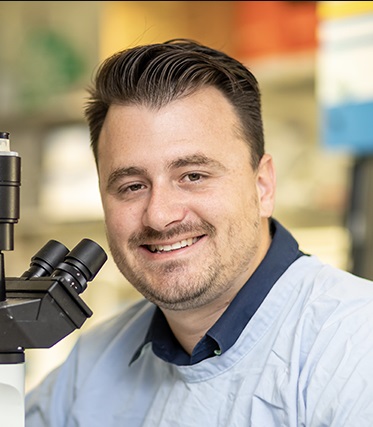
Hunter Medical Research Institute – $200,000
$200,000.00
November 2022
DMG COMBATT 2.0: Diffuse Midline Glioma COMbined Anti-Tumor Targeting 2.0
This proposal is a continuation of our project ‘COMBATT DMG’ supported by the DMG Collaborative in 2020. In COMBATT DMG we developed a catalog of new, central nervous system (CNS)-active drugs targeting ‘Protein kinase C’ (PKC). PKC is a signaling gene that drives the disseminative growth of DMG tumors, seeing them extend from their original, midline location, outward through healthy, previously functional, brain tissue. Our laboratory has discovered that PKC signaling is upregulated in tumor cells when an alternate cancer growth pathway (known as ‘PI3K’), is inhibited using the drug ‘paxalisib’. With paxalisib already in clinical trial for pediatric, adolescent, and young adult patients with diffuse midline glioma (DMG), plus adults with other high-grade gliomas (HGG), COMBATT DMG TWO will study the new, blood-brain-penetrant, potent PKC inhibitors in combination with paxalisib. Given our unique PKC analogs target the mechanism that rescues growth following DMG treatment with paxalisib (i.e., therapy resistance), we anticipate combined use of our novel PKC inhibitor/s with paxalisib will deliver improved outcomes by way of increasing the number of responders and enhancing the durability/duration of therapeutic benefit. In addition to the proposed clinical benefit, development of these unique drug molecules has added commercial potential.
DMG, including those of the pons (diffuse intrinsic pontine glioma - DIPG), are tumors of the central nervous system (CNS), and are primarily diagnosed in children and young adults. Although recognized as the most lethal of all childhood cancers, palliative radiotherapy remains the only proven treatment option, however, response is short-lived and not guaranteed.
A major contributor to the particularly poor outcomes experienced by DIPG/DMG patients is the location and nature of tumor growth. Positioned amid structures controlling the patient’s life-sustaining functions (e.g. breathing, swallowing, senses and movement), and intertwined with healthy brain matter, surgical resection is rarely an option. As such, access to tumor tissue for diagnosis and/or study purposes is limited. Additionally, the blood-brain barrier (BBB) is a highly-selective protective layer which regulates the flow of substances in and out of the brain. Just as it blocks toxins or bacteria, an anti-tumor drug/therapy showing good effect in laboratory-based studies will have no effect in a living patient if it is excluded by the BBB. Further, a lack of DMG-specific therapies/strategies potent enough to kill tumor cells without causing systemic toxicity is another hurdle the field is yet to overcome.
In recognition of these barriers to improved patient outcomes, this project attempts to address the unique biology underpinning DMG growth and therapies targeting these that show selective DMG efficacy and potential to penetrate the BBB to have a benefit for patients. Focusing on therapies already showing preliminary benefit in DMG clinical trials (paxalisib), we have identified strategies to amplify the DMG cell death induced by paxalisib, without causing harm to the body’s healthy brain cells.
Our in vitro studies underpinning this proposal confirm paxalisib reduces proliferation of DMG cells, but also potentiates the diffuse growth characteristics of DMGs through the activation of PKC in cells that are less sensitive to paxalisib. Using the aggressive DMG animal model ‘SU-DIPG-XIIIP*’, we show that the combination of paxalisib and PKC inhibitor enzastaurin (FDA approved for use in glioblastoma) extended the survival DMG mice by 22% (p<0.001). Notably, just 15-17% of the total dose of the PKC inhibitor enzastaurin showed BBB penetration, whereas >50% of paxalisib crossed the BBB. Additional medicinal chemistry modeling suggested enzastaurin and other existing PKC inhibitors were poor candidates for BBB penetration, and so, we have since designed and synthesized analogs of the PKC inhibitor showing greatest potential.
Our PKC inhibitor analogs are designed to be more effective at crossing the BBB and more potent in their ability to deactivate PKC. In this project we will scale up production of the two most promising analogs, and determine their activity in animal models, determine their safety and toxicity profiles, and determine the maximum tolerated dose that can be used without causing harm. Similarly, we will investigate toxicity and safety when used in combination with paxalisib. These studies will then progress to testing the most promising combination and dosing in DMG animal models to determine their preclinical benefit.
This program of work will be executed by a team of experts with recognized skills in drug development, DMG biology and commercialization. It is hoped that at the completion of this project that we will file for intellectual property protection for the most promising new PKC analog, and partner with our industry collaborators to develop the drug for testing under clinical trials. We hope that the successful completion of this project will lead to a combination treatment strategy designed on the unique biology of DMG that may help to reduce the infiltrative growth of the cancer and even lead to better outcomes when coupled with standard of care radiotherapy treatments.

The Institute of Cancer Research – $501,183
$501,183.00
November 2022
Translating Mechanism to Patient Benefit for ACVR1-Mutant Diffuse Intrinsic Pontine Glioma (DIPG)
Diffuse intrinsic pontine glioma, or DIPG, is a childhood brain tumor occuring in the brainstem of young children, for which there is currently no cure. Until recently, little was known about the makeup of this type of cancer, and treatments used for other adult brain tumor types consistently failed. Through the advocacy of families, the generous donation of post-mortem tissue and the reintroduction of safe biopsy procedures has provided tissue for researchers to identify the unique biology of DIPG, involving genes not previously linked to any other form of human cancer.
One such gene is ACVR1, which we discovered in a quarter of DIPG patients. We have shown that certain chemical inhibitors of ACVR1 may be effective in specific DIPG laboratory models, but at the time, these were not suitable drugs that could be safely given to children. There are now several companies with possible ACVR1 inhibitors that could be tested in the clinic. To help choose which is the most promising one, and to seamlessly run the clinical trial itself, we have put together a proposal from a collaborative group of researchers and clinical doctors from around the world with expertise in this type of tumor.
We will test a range of ACVR1 drugs in a large number of DIPG models in our labs, and if the results are promising, test the best one in DIPG patients across North America, UK, Europe and Australia. As other drugs developed against similar genes often show good initial results in other tumor types, but with rapid return of the tumor, we will also run experiments in parallel which would look specifically for how these tumors become resistant to the drug, and figure out ways to overcome this which could also then be tested in the clinic.
Our proposal seeks to develop the first new drug treatment for a gene target uniquely found in a pediatric brain tumor, and would provide the blueprint for future studies in other childhood cancer types.
In Year 1 of this study, five laboratories spanning North America, Europe and Australia have pooled resources to identify the ACVR1 inhibitor TP-0184 to be effective in cell models of DIPG, and particularly in combination with radiation or the MEK inhibitor trametinib. We wish to complete our studies in animal models of the disease, with the goal of testing this treatment in children with ACVR1-mutant DIPG in the upcoming CONNECT HGG Umbrella clinical trial (TarGeT).
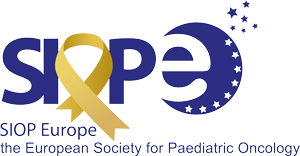
SIOPe DIPG/DMG Registry – $779,018
$779,018.00
March 2022
Renewal of the European DIPG/DMG Registry
The SIOPe DIPG/DMG Registry is a cooperative effort of 21 centers across 12 countries to identify patterns and abnormalities among DIPG and DMG to help enhance future efforts and trials.

Institute of Cancer Research – $113,747
$113,747.00
September 2021
Co-Culture Disruptor Screens to Target Cell-Cell Interactions in DMG
Diffuse midline glioma (DMG) is a malignant brain tumour arising in children representing a major unmet clinical need, with a 2-year survival rate close to zero. Existing treatments based upon targeting the genetic faults within the tumour cells have not yet produced any meaningful survival benefit, and so innovative solutions are required. We recently discovered DMG to be comprised of multiple distinct subpopulations of tumour cells that co-operate to grow, and spread throughout the brain. Having established a large number of examples of this phenomenon as model systems in our laboratory, we now want to test whether disrupting the way these cells interact could be a useful new treatment strategy, alone or in combination with other therapies. We will set up a unique drug screening platform to look specifically for compounds which affect the DMG subpopulations when grown together, and so specifically targeting the communication between them. This represents a completely new way of approaching DMG drug discovery, and may lead to new therapies to be tested in clinical trials.

Institute of Cancer Research – $498,716
$498,716.00
September 2021
Translating Mechanism to Patient Benefit for ACVR1-Mutant Diffuse Intrinsic Pontine Glioma (DIPG) - An International Connect Consortium Preclinical / Clinical
Diffuse intrinsic pontine glioma, or DIPG, is a childhood brain tumor occuring in the brainstem of young children, for which there is currently no cure. Until recently, little was known about the makeup of this type of cancer, and treatments used for other adult brain tumor types consistently failed. Through the advocacy of families, the generous donation of post-mortem tissue and the reintroduction of safe biopsy procedures has provided tissue for researchers to identify the unique biology of DIPG, involving genes not previously linked to any other form of human cancer.
One such gene is ACVR1, which we discovered in a quarter of DIPG patients. We have shown that certain chemical inhibitors of ACVR1 may be effective in specific DIPG laboratory models, but at the time, these were not suitable drugs that could be safely given to children. There are now several companies with possible ACVR1 inhibitors that could be tested in the clinic. To help choose which is the most promising one, and to seamlessly run the clinical trial itself, we have put together a proposal from a collaborative group of researchers and clinical doctors from around the world with expertise in this type of tumor.
We will test a range of ACVR1 drugs in a large number of DIPG models in our labs, and if the results are promising, test the best one in DIPG patients across North America, UK, Europe and Australia. As other drugs developed against similar genes often show good initial results in other tumor types, but with rapid return of the tumor, we will also run experiments in parallel which would look specifically for how these tumors become resistant to the drug, and figure out ways to overcome this which could also then be tested in the clinic.
Our proposal seeks to develop the first new drug treatment for a gene target uniquely found in a pediatric brain tumor, and would provide the blueprint for future studies in other childhood cancer types.
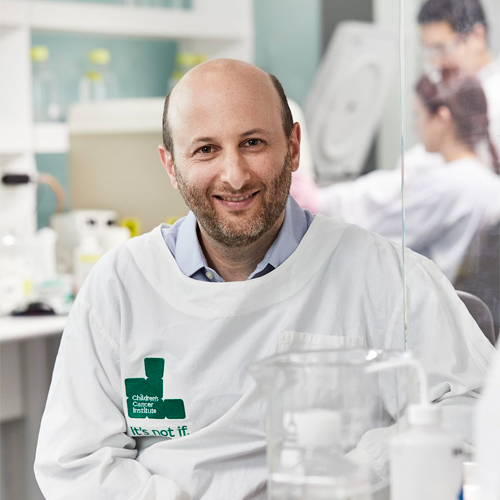
Sydney Children’s Hospital – $195,327
$195,327.00
September 2021
Phase I/II Study of Oral DFMO and AMXT1501 for DIPG/DMG
Brain cancers are the deadliest of all childhood cancer and the leading cause of disease associated death in children. Diffuse intrinsic pontine glioma (DIPG), and diffuse midline glioma (DMG) remain the most aggressive childhood cancers and the only available treatments for this group of brain cancers are palliative.
Our group has made the ground-breaking discovery that the polyamine pathway is a critical driver of DIPG/DMG and represents a novel therapeutic target. We have shown that dual targeting of the polyamine pathway is the most effective drug treatment strategy published to date in orthotopic animal models of childhood brainstem gliomas.
This project translates this preclinical work into a clinical trial to make this promising treatment available to children with DIPG. The combination of AMXT 1501 and DFMO potently inhibits the polyamine pathway and represents an exciting new treatment strategy for DIPG/DMG. Since DFMO is clinically available and the combination of AMXT 1501 and DFMO is currently being tested in adult patients in an open clinical trial, this combination can be rapidly translated to children with these aggressive, incurable brain tumours. Furthermore, this clinical trial will open through the international collaborative network, CONNECT, which will allow it to be open in at least 18 children’s hospitals around the world with access for children internationally.

Children’s Hospital of Colorado – $200,000
$200,000.00
September 2021
Multimodality, Combination Treatment Strategy for DIPG/DMG
DIPG is an aggressive childhood brain tumor that is nearly always fatal. Although most past patients have died of the tumor pushing on the brainstem’s pons area, DIPG spreads to other parts of the brain and spinal cord, known as the central nervous system (CNS). To cure DIPG, we will need to combine treatment to the main tumor in the pons and the widespread tumor too. We know that radiation treatment to the pons helps temporarily in DIPG but is not enough. We have shown that radiation to the rest of the CNS limits tumor spread, but even this isn’t enough. Chemotherapy has not been effective in the past, but new techniques like injecting medicine directly into the tumor, and new drugs that attack DIPG’s weaknesses, are starting to work. None of these will be enough individually, though. In this project, we will study combinations of radiation and chemotherapy, delivered both to the main tumor and the entire CNS, to find an approach that is most effective against DIPG in mouse models. We will also be developing this combination in parallel as a clinical trial that we believe will mark the beginning of true hope and better survival for patients.
Our past work on a project funded by The Cure Starts Now demonstrated key findings very important to this new project. We showed that even though oral or IV chemotherapy has not worked against DIPG in clinical trials, it can reach the tumor tissue enough to have a potential effect. We also built models in the lab of radiation to the entire CNS and to the pons alone in mice growing human DIPG in the pons. With this model, we showed that radiation to the entire CNS can limit spread of the tumor. Finally, we also built a model of chemotherapy injected directly into the pons and showed that we could get much higher levels of chemotherapy into the tumor than by giving it by IV.
We will now build on this work by studying how we can combine all these treatments together to control both local and widespread DIPG. We have chosen to study medicines that have already shown signs of working in DIPG and are in clinical trials, so that it will be very practical to develop a new combination trial. These medicines are called ONC201, panobinostat, ribociclib, selinexor, and paxalisib. We will use our models of human DIPG growing in a dish, and in the pons of mice, to test lots of combinations of medicines and radiation delivered directly to the tumor and to the whole CNS. We will find the most effective combination and study it in lots of models of DIPG through a network of labs. This combination will then be an excellent candidate to enter a combination clinical trial. At the same time, we will be working with experts in these promising DIPG treatments, as well as various other experts necessary to designing a combination clinical trial, including DIPG families, to build discussion and consensus around a combination approach.
In the past, the way we have finally started to cure previously incurable childhood cancers, like leukemia and neuroblastoma, is through treatment that combines different medicines and different types of treatment. Then, those treatments can be improved continuously to cure more and more patients. Our plan is that this project will mark the first combination treatment in DIPG that starts to truly make a difference in survival and quality of life for DIPG patients. We also hope it will lead to a transition through which new treatments, as they develop through cooperation around the world, are built onto the existing combination so that the survival curve for DIPG can start to rise just like we’ve seen for other childhood cancers.
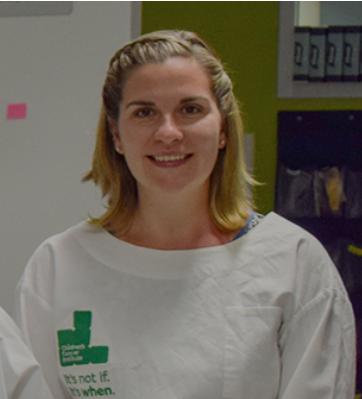
Children's Cancer Institute – $50,000
$50,000.00
September 2021
Developing Novel Combination Therapies for Diffuse Intrinsic Pontine Glioma
This project will develop novel combination therapies for the most aggressive childhood cancer, diffuse intrinsic pontine glioma (DIPG). Our team performed a comprehensive high-throughput drug screen, testing 3,570 drugs for their ability to prevent DIPG cell growth and found ACT001 to be one of the most effective drugs tested. ACT001 is known to have both antioxidant and anti-inflammatory properties and readily crosses the blood brain barrier. We have initiated a world first Phase 1 pediatric clinical trial of ACT001 for children with relapsed/refractory solid or CNS tumors, including patients with DIPG/DMG. Currently, fifteen patients, seven of which are DIPG/DMG patients, are enrolled and no dose-limiting toxicities have been observed. Excitingly, clinical activity has been demonstrated in three DIPG/DMG patients including improvement in the appearance of the tumor on MRI imaging, as well as improvement in patient symptoms. Using our preclinical models, we now seek to determine precisely how ACT001 works in DIPG and then use this information to evaluate potential ACT001 combination therapies, to enhance the effectiveness of ACT001. As such, this project will provide valuable information for developing new combination treatments that may lead to ACT001 as the first active treatment for children suffering from DIPG.
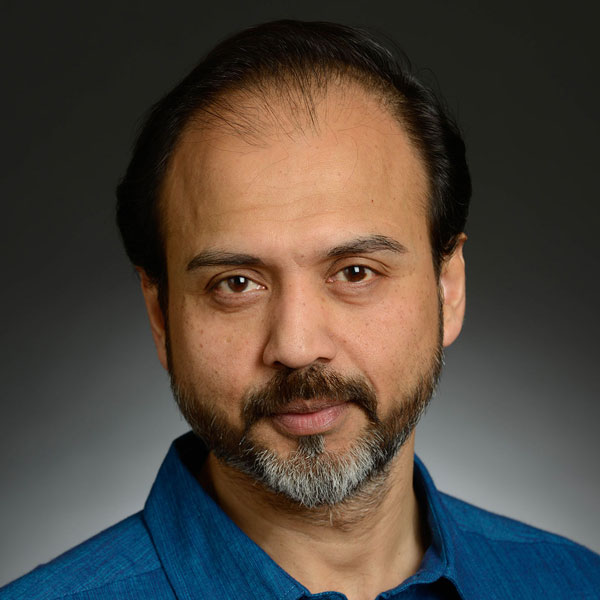
Cincinnati Children's Hospital – $200,000
$200,000.00
September 2021
Targeting Purine Synthesis and One Carbon Metabolism in DIPG
Diffuse intrinsic pontine glioma (DIPG) is a rare, infiltrative, and incurable brainstem malignancy in children resulting in death within one year from diagnosis. DIPG represents up to 85% of brainstem tumors and has the worst prognosis of all childhood cancers with a five-year overall survival of < 1% (1-5). These tumors are inoperable and surgical biopsies are not common. Being a rare disease (about 300-400 new cases in the US each year), resources and funding are scarce. Lack of surgical options confers particularly poor prognosis and a challenge to study the disease. Genomic studies have identified a recurrent mutation in histone H3 genes that leads to a K27M substitution in the protein and is present in nearly 80% of DIPG (6, 7). The dominant negative effect of the K27M mutation causes global loss of H3K27me3 methylation, interference with the polycomb repressive complex, releasing genes from their repressed state. This is thought to be a major driver for these tumors classifying H3K27M as an oncohistone (7-9). These key studies have substantially contributed to our understanding of the genetic and epigenetic drivers of DIPG. Several clinical trials extrapolated from adult glioma studies have failed to improve survival, and new rationally derived approaches based on our understanding of the disease biology are urgently needed. To better understand the disease and find new drug targets for DIPG that may also be applicable to other pediatric brain tumors, we recently performed for the first time, a thorough analysis of tumor metabolites and compared it to normal human brain cells. Drugs against metabolic targets in kidney cancer and leukemia are in clinical trials. This is a brand new idea in our laboratory. We do not have any publications or major funding on this idea. We have generated the first gene-metabolite interaction map of six DIPG cell lines and compared that with normal human neural stem cell lines. Through bioinformatic and preliminary experimental analysis, we discovered that two key genes in the metabolic pathway that makes the building blocks for DNA and RNA are novel targets in DIPG. We also found that DIPG patient mutations directly regulate these genes. Drugs against these genes are available, and they specifically killed all DIPG cell lines but not normal brain cells. In a pilot study, one drug quadrupled the survival of mice with DIPG compared to mice that didn’t receive treatment. The brain penetration of these drugs is unknown. We will use higher doses of these drugs to examine toxicity, brain penetration and therapeutic efficacy in combination with proton therapy in our preclinical model of DIPG.

UPMC Children's Hospital – $50,000
$50,000.00
September 2021
The Role of QPRT and NAD Pathways in DIPG Treatment Resistance
The proposed study will provide insights into a novel strategy to inhibit energy metabolism as a potential way to tackle treatment-resistant high-grade gliomas (HGGs) and diffuse intrinsic pontine gliomas (DIPGs), the most commonly fatal brain tumors of childhood. This work incorporates our unique resource of treatment-naïve and treatment-resistant models to examine the role of NAD+ (nicotinamide adenine dinucleotide) production, which is critical for energy use in these tumors, and how blocking this process may provide an innovative treatment approach. Our observations, using drugs currently in clinical trials, will define underlying causes of resistance in DIPGs, which has been an ongoing problem for children with these tumors. The intriguing findings of our preliminary studies support a hypothesis that treatment-resistant cells have strong dependence on mediators of NAD+ production, such as the enzyme QPRT (quinolinic acid phosphoribosyltransferase). NAD+-driven pathways, in turn, activate enzymes that are critical for glucose usage, which appears to provide tumor cells with a survival advantage. We seek to identify targets for treatment that can be exploited to improve the chances for cure in children with DIPG and HGG.
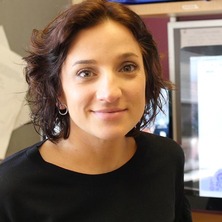
University of Queensland Diamantina Institute – $100,000
$100,000.00
September 2021
Innovative Models of the Brain Microenvironment to Identify New Treatments for Medulloblastoma
Brain tumors are the leading cause of disease related mortality in children. Survival rates for children diagnosed with medulloblastoma (MB), the most common malignant pediatric brain tumor, have stagnated for decades. Despite aggressive treatment approaches, a significant proportion of patients relapse, which is almost always fatal. Very little is currently known of the biology and the mechanisms underpinning medulloblastoma relapse. We urgently need a deeper understanding of how tumors relapse and become resistant to therapy to achieve better outcomes for children.
Our preliminary work suggests that tumor-driven changes in the brain microenvironment contribute to MB relapse, in particular the surrounding supportive scaffold and brain vessels. Precisely how tumor cells interact with the dynamically changing tumor microenvironment and blood vessel network and the impact of this on MB response to therapy remains unknown. We are proposing to apply our innovative pre-clinical models to examine the dynamic interactions between MB cells and their environment. This work generates a dramatically improved understanding of how specific environmental cues influence the therapeutic response of MB. Understanding the mechanisms underpinning relapse positions us to identify new drug targets and propose combination therapies that will enhance survival by reducing the likelihood of relapse.